Charleston, West Virginia, Hgh State Clinic, Hgh Injections, Hrt Doctors
Charleston, West Virginia Blood Testing Facilities
 Represents a LabCorp blood testing facility
Represents a LabCorp blood testing facility Represents a Quest Diagnostics blood testing facility
Represents a Quest Diagnostics blood testing facility
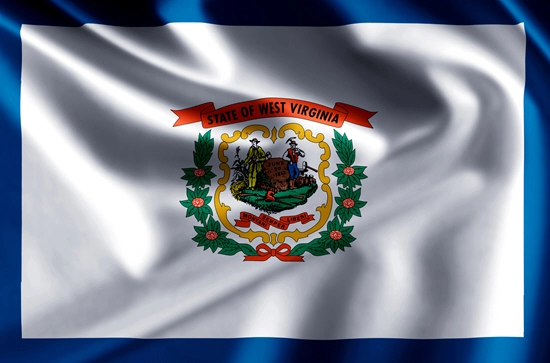
Nearby Labcorp Blood Testing facilities:
- Labcorp Center Distance: 2 m, 3701 Maccorkle Ave Se, Charleston, Kanawha County, WV, 25304
- Labcorp Center Distance: 5 m, 428 Division St Suite 1A, South Charleston, Kanawha County, WV, 25309
- Labcorp Center Distance: 9 m, 5480 Big Tyler Rd, Cross Lanes, Kanawha County, WV, 25313
- Labcorp Center Distance: 18 m, 1207 Hospital Dr, Hurricane, Putnam County, WV, 25526
- Labcorp Center Distance: 40 m, 20 Hospital Dr, Logan, Logan County, WV, 25601
- Labcorp Center Distance: 41 m, 3135 16Th Street Rd Ste 10, Huntington, Cabell County, WV, 25701
- Labcorp Center Distance: 43 m, 400 Fairview Heights Rd, Summersville, Nicholas County, WV, 26651
- Labcorp Center Distance: 45 m, 406 Carriage Dr, Beckley, Raleigh County, WV, 25801
- Labcorp Center Distance: 47 m, 2401 S Kanawha St, Beckley, Raleigh County, WV, 25801
- Labcorp Center Distance: 55 m, 412 North Lock Ave, Louisa, Lawrence County, KY, 41230
- Labcorp Center Distance: 63 m, 1212 Garfield Ave Ste 101, Parkersburg, Wood County, WV, 26101
- Labcorp Center Distance: 66 m, 324 Miller Mountain Dr, Webster Springs, Webster County, WV, 26288
- Labcorp Center Distance: 74 m, 150 Courthouse Rd Ste 102, Princeton, Mercer County, WV, 24740
- Labcorp Center Distance: 75 m, 111 Lafayette St Ste 302, Saint Marys, Pleasants County, WV, 26170
- Labcorp Center Distance: 76 m, 419 Town Mountain Road Ste 208, Pikeville, Pike County, KY, 41501
- Labcorp Center Distance: 87 m, 2949 W Front St, Richlands, Tazewell County, VA, 24641
- Labcorp Center Distance: 90 m, 314 S Wells St, Sistersville, Tyler County, WV, 26175
- Labcorp Center Distance: 98 m, 215 W Main St, Bridgeport, Harrison County, WV, 26330
Nearby Quest Blood Testing facilities:
- Quest Center Distance: 5 m, 4610 Kanawha Southwest, South Charleston, Kanawha County, WV, 25309-1320
West Virginia Hormone Replacement Solutions
Growing older is a perilous inevitability. Are you interested in taking steps to preserve your health and youthfulness as long as possible, and to reduce the risk and severity of a number of chronic medical conditions? You may be a candidate for Hormone Replacement Therapy. The Conscious Evolution Institute is West Virginia's number one provider of quality Hormone Treatments and Hormone Optimization.
With just a simple appointment that lasts less than a half an hour with one of our affiliate physicians in your area, our clinic can get all of the diagnostic data that it needs to make an informed diagnosis. We offer a variety of Hormone Services, including Testosterone Replacement Therapy, HGH Injection Therapy, and the HCG Diet. Just contact us via our website or our phone number to get started today!
West Virginia Low-T Treatments
What is Andropause? Most men are rather keenly aware of the effect of Menopause on women, but did you know that men go through a similar hormonal change as they approach midlife? Menopause happens suddenly, but Andropause is a more gradual change, that is most noticeable when it impacts Testosterone Production and sexual health.
If you notice a decline in sexual interest, combined with changes in your attitude or body composition, you are very likely feeling the effects of Andropause. Let our clinical professionals analyze your health status and discover if Testosterone Restoration can help bring the zest back to your sex life, while also preserving your lean muscle mass and natural male assertiveness. With our help, we can help you sustain your manhood and physiological vitality into your golden years!
West Virginia HGH Restoration
Human Growth Hormone is one of the most important hormones produced by the body when it comes to optimized function. HGH controls metabolism at the cellular level, and makes sure that the body is functioning like a well oiled and calibrated machine. Sadly, the body starts to lose steam in the late twenties, and Growth Hormone production starts to decline.
It may take years or even decades to becomes symptomatic, but the changes to one's health can become staggering over time. There are a number of symptoms associated with HGH Deficiency, including weight gain, loss of lean muscle mass, declining memory and cognitive function, depression, and chronic exhaustion.
The longevity physicians at the Conscious Evolution Institute have years upon years of experience in dealing with and treating Adult-Onset Growth Hormone Deficiency, and can help you overcome the negative influence of hormone imbalance. The two primary treatments that we offer are Recombinant HGH Therapy and Sermorelin Acetate Injections. Both forms of treatment are safe and highly effective at restoring your HGH Levels to those associated with the vitality of your early twenties.
West Virginia HCG Injections
In addition to our quality Hormone Restoration Products, we also offer a treatment known as HCG Therapy. This is a clinically proven weight loss therapy for patients that have struggled with their weight and are looking for a guaranteed solution. HCG cuts the cravings as well as the fat, and leaves you with the energy to go about your day to day life. Lose up to a pound per day with this revolutionary weight loss treatment!
Largest Cities in West Virginia
Charleston
Charleston, West Virginia is both the capital and most populous city in the state of West Virginia. Charleston was first inhabited as a frontier settlement known as Fort Lee. The city continues to be an important military outpost, now the home of McLaughlin Air National Guard Base. The city is also recognized for its wonderful parks and hiking trails, including the Kanawa State Forest and Coonskin Park, named in honor of Daniel Boone. Companies located in Charleston include Mountaineer Gas Company and Appalachian Power.
Huntington
Huntington is located in the western portion of West Virginia along the border with Ohio, and is located in the same statistical area as Charleston. Huntington is the second most populous city in West Virginia and is most notable for being the home of Marshall University. The economy of Huntington is dominated by education, transportation, medicine, and the military. St. Mary's Medical Center, Cabell Huntington Hospital, and Marshall University are the largest employers.
Parkersburg
Parkersburg is located in the northern portion of West Virginia, just across the Ohio River from the state of Ohio. The city is the third most populous in the state, and its motto is Where West Virginia Began. The city prides itself on its historical significance, and there are a number of museums in the city, including the Oil and Gas Museum, the Henry Cooper Log Cabin Museum, and the Biennerhassett Museum of Regional History.
Morgantown
Morgantown is the fifth most populous city in the state of West Virginia and is located to the south of Pittsburgh, Pennsylvania. Morgantown is home to the University of West Virginia. The city is widely regarded as being one of the best small cities in the country, as well as one of the best to start a career, and is also considered a very business-friendly city. Attractions in the city include The Metropolitan Theater, Dorsey Knob, and Core Arboretum.
Wheeling
Wheeling, West Virginia is located along the northern tip of the state and is the fifth most populous city in the state. Historically, Wheeling was where the decision was made for West Virginia to split from Virginia around the time of the outbreak of the Civil War. Many museums and historical buildings are in the area, including West Virginia Independence Hall and Centre Market.
All About Charleston, West Virginia Geographic Area

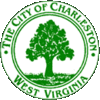
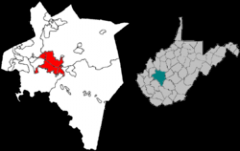
Charleston is the capital and largest city of the U.S. state of West Virginia. It is located at the confluence of the Elk and Kanawha Rivers in Kanawha County. As of the 2010 Census, it had a population of 51,400, while its metropolitan area had 304,214. It is the county seat of Kanawha County.
Early industries important to Charleston included salt and the first natural gas well. Later, coal became central to economic prosperity in the city and the surrounding area. Today, trade, utilities, government, medicine and education play the central role in the city's economy.
The first permanent settlement, Ft. Lee, was built in 1788. In 1791, Daniel Boone was a member of the Kanawha County Assembly.
Charleston is the home of the West Virginia Power (formerly the Charleston Alley Cats and the Charleston Wheelers) minor league baseball team, the West Virginia Wild minor league basketball team, and the annual 15-mile (24 km) Charleston Distance Run. Yeager Airport and the University of Charleston are also located in the city.
Charleston is also home to the 130th Airlift Wing of the West Virginia Air National Guard.
The city also contains public parks, such as Cato Park and Coonskin Park, and the Kanawha State Forest, a large public state park that sustains a pool, camping sites, several biking/walking trails, picnic areas, as well as several shelters provided for recreational use.
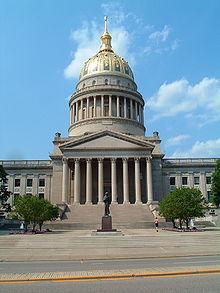
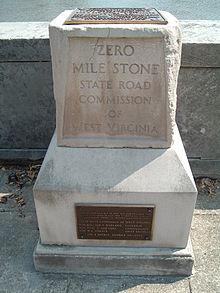
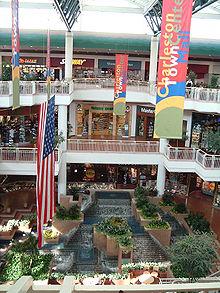
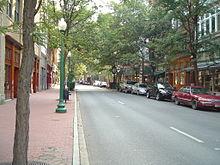
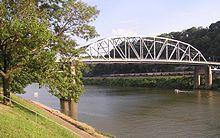
After the American Revolutionary War, pioneers began making their way out from the early settlements. Many slowly migrated into the western part of Virginia. Capitalizing on its many resources made Charleston an important part of Virginia and West Virginia history. Today, Charleston is the largest city in the state and the state capital.
Charleston's history goes back to the 18th century. Thomas Bullitt was deeded 1,250 acres (5 km2) of land near the mouth of the Elk River in 1773. It was inherited by his brother, Cuthbert Bullitt, upon his death in 1782, and sold to Col. George Clendenin in 1786. The first permanent settlement, Fort Lee, was built in 1787 by Col. Clendenin and his company of Virginia Rangers. This structure occupied the area that is now the intersection of Brooks Street and Kanawha Boulevard. Historical conjecture indicates that Charleston is named after Col. Clendenin's father, Charles. Charles Town was later shortened to Charleston to avoid confusion with another Charles Town in eastern West Virginia, which was named after George Washington's brother Charles.
Six years later, the Virginia General Assembly officially established Charleston. On the 40 acres (160,000 m2) that made up the town in 1794, 35 people inhabited seven houses.
Charleston is part of Kanawha County. The origin of the word Kanawha (pronounced "KA-NAW"), "Ka(h)nawha", derives from the region's Iroquois dialects meaning "water way" or "Canoe Way" implying the metaphor, "transport way", in the local language. It was and is the name of the river that flows past Charleston. The grammar of the "hard H" sound soon dropped out as new arrivals of various European languages developed West Virginia. The phrase has been a matter of Register (sociolinguistics). In fact, a two-story jail was the first county structure ever built, with the first floor literally dug into the bank of the Kanawha River.
Daniel Boone, who was commissioned a lieutenant colonel of the Kanawha County militia, was elected to serve in 1791 in the Virginia House of Delegates. As told in historical accounts, Boone walked all the way to Richmond.
By the early 19th century, salt brines were discovered along the Kanawha River and the first salt well was drilled in 1806. This created a prosperous time and great economic growth for the area. By 1808, 1,250 pounds of salt were being produced a day. An area adjacent to Charleston, Kanawha Salines, now Malden, would become the top salt producer in the world. In 1818, Kanawha Salt Company, first trust in United States, went into operation.
Captain James Wilson, while drilling for salt, struck the first natural gas well in 1815. It was drilled at the site that is now the junction of Brooks Street and Kanawha Boulevard (near the present-day state capitol complex.) In 1817, coal was first discovered and gradually became used as the fuel for the salt works. The Kanawha salt industry declined in importance after 1861, until the advent of World War I brought a demand for chemical products. The chemicals needed were chlorine and sodium hydroxide, which could be made from salt brine.
The town continued to grow until the Civil War began in 1861. The state of Virginia seceded from the Union, and Charleston was divided between Union and Confederate loyalty. On September 13, 1862, the Union and Confederate Armies met in the Battle of Charleston. Although the Confederate States Army was victorious, occupation of the city was short-lived. Union troops returned just six weeks later and stayed through the end of the war.
The Northern hold on Charleston and most of the western part of Virginia created an even larger problem. Virginia already had seceded from the Union, but the western part was under Union control. The issue of statehood was raised. So amid the tumultuous Civil War, West Virginia officially became a state through Presidential Proclamation. Abraham Lincoln declared the northwestern portion of Virginia to be returned to the Union, and on June 20, 1863, West Virginia became the 35th state.
In addition to the issue of slavery, West Virginia was also driven to separate from Virginia for economic reasons. The heavy industries in the North, particularly the steel business of the upper Ohio River region, were dependent on the coal available from western Virginia mines. Federalized military units were dispatched from Ohio to western Virginia early in the war to secure access to the coal mines and transportation resources.
Although the state now existed, settling on a state capital location proved to be difficult. For several years, the capital of West Virginia intermittently traveled between Wheeling and Charleston. In 1877, however, state citizens voted on the final location of their capital. Charleston received 41, 243 votes, Clarksburg received 29,442 and Martinsburg received 8,046. Wheeling was not an available option for voting. Charleston was chosen and eight years later, the first capitol building was opened.
After a fire in 1921, a hastily built structure was opened but burned down in 1927. However, a Capitol Building Commission, created by the Legislature in 1921, authorized construction of the present capitol. Architect Cass Gilbert designed the buff Indiana limestone structure, in the Italian Renaissance style, that was to have a final cost of just under $10 million. After the three stages of construction were completed, Governor William G. Conley dedicated the West Virginia State Capitol on June 20, 1932.
Charleston was now the center for state government. Natural resources, such as coal and natural gas, along with railroad expansion also contributed to growth. New industries, such as chemical, glass, timber and steel migrated to the state, attracted by the area's natural resources. There was a huge amount of new construction in Charleston. A number of those buildings, including churches and office buildings, still stand in the heart of downtown along and bordering Capitol Street.
During World War II, the first and largest styrene-butadiene plant in the U.S. opened in nearby Institute, providing a replacement for rubber to the war effort. After the war ended, Charleston was on the brink of some significant construction. One of the first during this period was Kanawha Airport (now Yeager Airport, named after General Chuck Yeager), which was perhaps one of the most phenomenal engineering accomplishments of its time. Built in 1947, the construction encompassed clearing 360 acres (1.5 km2) on three mountaintops moving more than nine million cubic yards of earth.
In 1959, the Charleston Civic Center opened its doors. It stands today, totally renovated and providing the largest meeting and exhibit space available in West Virginia.
In 1956, President Dwight D. Eisenhower signed the Federal Aid Highway Act. Charleston became part of that system in the 1960s when three major interstate systems aeI-64, I-77 and I-79 were constructed, all converging in the heart of Charleston. These roads provide convenient access to Midwestern, Northeastern and Southern cities. Charleston is within a day's drive of 60 percent of the U.S. population.
In 1983, the Charleston Town Center opened its doors downtown. It was the largest urban-based mall east of the Mississippi River, featuring three stories of shops and eateries. Downtown revitalization began in earnest in the late 1980s as well. Funds were set aside for streetscaping as Capitol and Quarrier Streets saw new building facades, trees along the streets, and brick walkways installed. For a time, the opening of the Charleston Town Center Mall had a somewhat negative impact on the main streets of downtown Charleston, as many businesses closed and relocated into the mall. For a while, the downtown business district (outside of the mall) had a "ghost town" feel to it which took several years to turn around. Today, Capitol Street, Hale Street, and other bordering streets are an eclectic mixture of restaurants, shops, businesses and services that many call the centerpiece of downtown.
The new Robert C. Byrd Federal Building, Haddad Riverfront Park and Capitol Market are just a few new developments that have helped growth in the downtown area during the 1990s. Charleston also became known as one of the premiere healthcare spots in the state. Along with ambitious thinking, plans for even new entertainment and business venues kept Charleston moving along at a steady pace.
In 1983, WV Public Radio launched a live-performance radio program statewide called Mountain Stage . What began as a live, monthly state-wide broadcast went on to national distribution in 1986. Now in its 26th season, Mountain Stage with Larry Groce records 26 two-hour programs each year, mostly at the Culture Center Theater in Charleston, and is heard on over 100 radio stations through National Public Radio and around the world on the Voice of America satellite service.
2003 marked the opening of the Clay Center for the Arts & Sciences. The center includes The Maier Foundation Performance Hall, The Walker Theatre, The Avampato Discovery Museum and an art museum. Also on site is The ElectricSky Theater, which is a 175-seat combination planetarium and dome-screen cinema. Movies shown at the theatre include educational large format (70 mm) presentations, and are often seen in similar Omnimax theatres. Planetarium shows are staged as a combination of pre-recorded and live presentations.
Many festivals and events were also incorporated into the calendar, including Multifest, Vandalia Festival, a 4 July celebration with fireworks at Haddad Riverfront Park, and the already popular Sternwheel Regatta, which was founded in 1970, provided a festive atmosphere for residents to enjoy. In 2005 FestivALL Charleston was established and has grown into a ten day festival offering a variety of performances, events and exhibits in music, dance, theatre, visual arts and other entertainments.
Charleston West Virginia has one central agency for its economic development efforts, the Charleston Area Alliance. The Alliance works with local public officials and the private sector to build the economy of the region and revitalize its downtown. Charleston contains a historic district referred to as the East End. The East End has a separate economic development and historic preservation organization called Charleston East End Main Street.

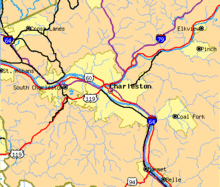
Charleston is located at 38 °20 a²58 a³N 81 °38 a²0 a³W / 38.34944 °N 81.633333 °W / 38.34944; -81.633333 (38.349497, -81.633294).
According to the United States Census Bureau, the city has a total area of 32.7 square miles (85 km2), of which, 31.6 square miles (82 km2) of it is land and 1.1 square miles (2.8 km2) of it (3.36%) is water.
The city lies at the intersection of Interstates 79, 77, 64, and also where the Kanawha and Elk Rivers meet. Charleston is about 162 miles (261 km) southeast of Columbus, Ohio, 315 miles (507 km) west of Richmond, Virginia, 228 miles (367 km) southwest of Pittsburgh, Pennsylvania, 247 miles (398 km) east of Louisville, Kentucky, 264 miles (425 km) north of Charlotte, North Carolina, 252 miles (406 km) south of Cleveland, Ohio, and 210 miles (340 km) southeast of Cincinnati, Ohio.
The following are neighborhoods and communities actually within the city limits:
The following communities are suburbs of Charleston:
Charleston has a four-season climate lying within the northern fringes of a humid subtropical climate (Koppen Cfa), which is primarily based on differences in elevation. Especially in winter, Charleston's average temperatures are usually warmer than the rest of the state, due to the city being west of the higher elevations. Spring is the most unpredictable season, and spring-like weather usually arrives in late March or early April. From the beginning of March through early May, temperatures can vary considerably and it is not unusual at this time for day-to-day temperature fluctuations to exceed 20 °F (11 °C). Temperatures warm up considerably in late May, with warm summer-like days. Summer is hot, with 23 days of highs at or above 90 °F (32.2 °C), sometimes reaching 95 °F (35 °C), often accompanied by high humidity. Autumn features crisp evenings that warm quickly to mild to warm afternoons. Winters are cool, with a January daily average of 34.4 °F (1.3 °C), but with occasional stretches of 50 °F (10 °C)+ temperatures, and sub-0 °F ( na17.8 °C) lows are rare. Snowfall generally occurs from late November to early April, with the heaviest period being January and February. However, major snowstorms of more than 10 inches (25 cm) are rare. The area receives, excepting October, more than 3 inches (76 mm) of precipitation each month, with measurable amounts falling on more than 150 days per year. Thunderstorms are frequent during the late spring and throughout the summer, and occasionally they can be quite severe, producing the rare tornado.
Extremes have ranged from na17 °F ( na27 °C) in December 1917 to 108 °F (42 °C) in July 1931 and August 1918.
Charleston functions under the Mayor-Council form of city government. The Mayor is the designated Chief Executive Officer of the city with the duty to see that all of the laws and ordinances of the city are enforced. The Mayor gives general supervision over all executive departments, offices and agencies of the city government and is the presiding officer of the Council and a voting member thereof. The current mayor is a Republican, Danny Jones, who was elected in 2003, and re-elected in 2007 and 2011. Charleston also has a City Manager who is appointed by the Mayor and approved by the Council. The City Manager has supervision and control of the executive work and management of the heads of all departments under his control as directed by the Mayor, makes all contracts for labor and supplies, and generally has the responsibility for all of the business and administrative work of the city.
With 27 members, the Charleston City Council is somewhat larger than usual for a city with a population of 50,000. Twenty-one of the Council members are elected from a specific Ward within the city, and an additional six members are elected by the city at large.
General Elections for Mayor, City Council and other city officers take place in May every four years (Primary Elections are held in March). The most recent election was in May, 2011. The next scheduled election will be in 2015.
As of the census of 2000, there were 53,421 people, 24,505 households, and 13,624 families residing in the city. The population density was 1,690.4 people per square mile (652.7/km ²). There were 27,131 housing units at an average density of 858.5 per square mile (331.5/km ²). The racial makeup of the city was 80.63% White, 15.07% Black or African American, 0.24% Native American, 1.83% Asian, 0.03% Pacific Islander, 0.30% from other races, and 1.91% from two or more races. 0.81% of the population were Hispanics or Latinos of any race. The five most common ancestries were German (12.4%), English (11.6%), American (11.4%), Irish (10.6%), and Italian (3.9%).
There were 24,505 households out of which 23.7% had children under the age of 18 living with them, 38.9% were married couples living together, 13.5% had a female householder with no husband present, and 44.4% were non-families. 38.9% of all households were made up of individuals and 14.5% had someone living alone who was 65 years of age or older. The average household size was 2.11 and the average family size was 2.82.
The age distribution was 20.7% under 18, 8.4% from 18 to 24, 27.9% from 25 to 44, 25.3% from 45 to 64, and 17.6% who were 65 or older. The median age was 41 years. For every 100 females there were 87.3 males. For every 100 females age 18 and over, there were 83.7 males.
The median income for a household in the city was $34,009, and the median income for a family was $47,975. Males had a median income of $38,257 versus $26,671 for females. The per capita income for the city was $26,017. About 12.7% of families and 16.7% of the population were below the poverty line, including 24.5% of those under age 18 and 11.3% of those age 65 or over.
The city of Charleston has numerous schools that are part of Kanawha County Schools. The three high schools are:
Charleston High School was located across the street from Charleston General Hospital. There is now a doctor's office building and parking on the site.
Also known as Junior High Schools.
Charleston hosts a branch campus of West Virginia University that serves as a clinical campus for the university's medical and dental schools. Students at either school must complete their class work at the main campus in Morgantown but can complete their clinical rotations at hospitals in Morgantown, the Eastern Panhandle, or Charleston. Students from West Virginia School of Osteopathic Medicine may also complete their clinical rotations at the branch campus, after completing their first two academic years at the main campus in Lewisburg.
The city is also home to a 1,000-student private college, the University of Charleston, formerly Morris Harvey College. The college is located on MacCorkle Avenue along the banks of the Kanawha River in the community of South Ruffner. In 2006 the college opened a school of Pharmacy.
Located within the immediate area are West Virginia State University in Institute, Kanawha Valley Community and Technical College in South Charleston, and the Marshall University ae South Charleston Campus, a postgraduate-only branch of Marshall University, also in South Charleston. The region is also home to the Charleston Branch of the Robert C. Byrd Institute for Advanced Flexible Manufacturing, an independent program administered by Marshall University; it provides access to computer numerical control (CNC) equipment for businesses in two states.
Located approximately 30 miles (50 km) from Charleston, West Virginia University Institute of Technology has its campus in Montgomery, West Virginia. West Virginia University Institute of Technology is the largest regional campus of the University and focuses mainly on engineering programs.
Charleston is also home to West Virginia Junior College's Charleston campus. Located in downtown Charleston at 1000 Virginia Street, WV Junior College is accredited by the Accrediting Council for Independent Colleges and Schools to award diplomas and associate degrees. Part of the Kanawha Valley for almost 115 years, WV Junior College was originally established as Capitol City Commercial College on September 1, 1892. The College was originally established to train students in secretarial and business skills and has undergone changes in location and curriculum through the years.
CAMC (Charleston Area Medical Center) a complex of hospitals throughout the city.
Saint Francis Hospital (located in downtown)
Charleston is home to numerous annual events and fairs that take place throughout the city, from the banks of the Kanawha River to the capitol grounds.
The West Virginia Dance Festival, held between April 25 and 30, features dance students from across the state that attend classes and workshops in ballet, jazz and modern dance. At the finale, the students perform in the West Virginia State Theatre; these are free to the public.
Beginning in 1982, Symphony Sunday, held annually usually the first weekend in June, is a full day of music, food, and family fun, culminating in a free performance by the West Virginia Symphony Orchestra and a fireworks display following. Throughout the day, local performing community dance and music ensembles present a series of their own selected pieces with the final performance being by the West Virginia Symphony Orchestra. The local performing community dance and music ensembles that perform for Symphony Sunday include the Kanawha Valley Ringers, the West Virginia Kickers, the Charleston Metro Band, the West Virginia Youth Symphony, the Mountain State Brass Band, and the Kanawha Valley Community Band. The now defunct Charleston Neophonic Orchestra has also performed at the event. The event is held on the front lawn of the University of Charleston. The WVSO annually closes the event with the 1812 Overture followed by "The Stars and Stripes Forever" before the fireworks display.
Twice a year, in late April and again in early November, the West Virginia International Film Festival occurs, where many domestic and international films are shown that range from "full-length feature films, shorts, documentaries, animation and student films. It is the official state film festival.
At the end of September of each year, usually the last Tuesday of September, Charleston hosts the Daily Mail Kanawha County Majorette and Band Festival for the eight public high schools in Kanawha County. The festival began in 1947 and has continued on as an annual tradition. The festival is held at the University of Charleston Stadium at Laidley Field in downtown Charleston. It is West Virginia's longest running music festival.
On the Saturday of Valentine's Day Weekend every year, residents gather together for the not-quite-a-5k Grumble Run 5k. The Run attracts those who aren't runners and the 5k features frequent stops for candy, conversation, ice cream, smoke breaks and general Grumbling about having to walk or jog for more than three miles. This is paired with an Anti / Pro Valentine's Day Party which is hosted annually in the evenings.
On May 6, the Kanawha Kordsmen Barbershop Chorus performs at the Clay Center for the Arts & Sciences. The 40-man a cappella chorus performs music in a show titled "Songs America Sings." On Memorial Day weekend, the Vandalia Gathering is held on the grounds of the state capitol. Thousands of visitors each year enjoy traditional music, art, dance, stories, crafts and food that stems from the "uniqueness of West Virginia's mountain culture." There is no fee for admission.
Since 2005 FestivALL has provided the Charleston area with cultural and artistic events beginning on June 20 (West Virginia Day) and including dance, theater, and music. FestivALL provides local artists a valuable chance to display their works and help get others interested in, and involved with, the local artistic community. Highlights include an art fair on Capitol Street and local bands playing live music at stages set up throughout downtown, as well as a wine and jazz festival on the campus of the University of Charleston featuring local and nationally known jazz artists and showcasing the products of West Virginia vineyards.
The Charleston Sternwheel Regatta, founded in 1970, is a former annual event that was held on Labor Day weekend of each year. The event had carnival style rides and attractions and live music from local and nationally known bands. It was held on the Kanawha Boulevard by Haddad Riverfront Park on the Kanawha River. The event started the Wednesday before Labor Day Weekend and ended the Sunday of Labor Day Weekend with a fireworks show on Sunday evening. Due to "political differences" between local sternwheel owners and factions of city government, sternwheel attendance declined in recent years. Once a promising regatta, rivaling Tall Stacks in Cincinnati, it was discontinued after the 2008 festival season. Charleston, home to the largest population of privately owned sternwheel vessels in the United States is the only city in the region not home to an annual river festival.
The 2008 World's Strongest Man Competition was hosted in Charleston, the hometown of Phil Pfister, the champion of the 2006 games.
The Beach Sports Network, comprising The EVP Tour and Upstate Watercraft Promotions, produced the first annual "EVP Rocks the River" from July 31-August 2, 2009. This consisted of a Volleyball tournament along side world class Watercross.
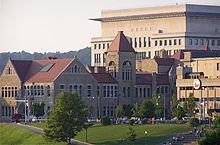
Charleston possesses a number of older buildings which represent a variety of historical architectural styles. About fifty places in Charleston are included on the National Register of Historic Places. A segment of the East End consisting of several blocks of both Virginia and Quarrier Streets, encompassing an area of nearly a full square mile, has been officially designated as a historical neighborhood. This residential neighborhood has many houses dating from the late 19th and early 20th century as well as a few art deco style apartment buildings dating from the 1920s and early 30s.
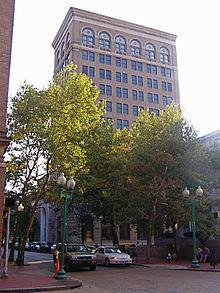
Downtown Charleston is home to several commercial buildings that are between 80 to 115 years old, including such notable structures as the Security Building (corner of Virginia and Capitol Street), 401 Capitol Street (the former Daniel Boone Hotel), the Union Building (at the southern end of Capitol Street), the Kanawha County Courthouse, the Public Library (corner of Capitol and Quarrier Streets) and the Masonic Temple (corner of Virginia and Dickenson Street).
Also of note are several historic churches grouped closely together in a neighborhood just to the east of downtown; Basilica of the Co-Cathedral of the Sacred Heart (one of the two cathedrals of the Roman Catholic Diocese of Wheeling-Charleston), First Presbyterian Church, Kanawha United Presbyterian Church, St. John's Episcopal Church, Charleston Baptist Temple, St. Paul's Evangelical Lutheran Church, and Christ Church United Methodist.
Additional historic buildings can be found throughout the city, particularly in the broader East End, the West Side and Kanawha City. Some of these buildings include:
Currently there is only one shopping mall in the city of Charleston, the Charleston Town Center. Opened in 1983, the Town Center Mall is a three-story shopping and dining facility, with 130 specialty stores. Macy's, Sears and J.C. Penney are the mall's current anchor stores. The fourth anchor pad is occupied by the headquarters for BrickStreet Mutual Insurance Co., the private West Virginia aebased workers' compensation carrier. There are also six major restaurants located on street level and 12 fast food restaurants representing the food court, located on the third floor of the mall.
There are four major shopping plazas located in Charleston, one in the Kanawha City neighborhood - The Shops at Kanawha - and three in the Southridge area, divided between Charleston and South Charleston ae Southridge Centre, Dudley Farms Plaza, and The Shops at Trace Fork.
Major stores:
The Shops at Kanawha plaza, formerly The Kanawha Mall, includes Elder-Beerman and Gabriel Brothers as its anchor stores, with the West Virginia Department of Motor Vehicles Customer Service Center as the only remaining tenant in the indoor mall section of the facility. Lowes and Kroger, while not attached to the plaza, are also an integral part of the area. Taco Bell, Applebees, Burger King, Arbys, Captain Dee's, and Cracker Barrel restaurants, as well as two bank branches and several local restaurants, round out the area.
Southridge Centre plaza includes Wal-Mart, Staples, Cabela's, Toys "R" Us, Gander Mountain, Ashley Home Furnishings, and Sam's Club. Southridge is also home to Olive Garden, Red Lobster, Chucky Cheese, Quaker Steak & Lube, Wendy's, Taco Bell, McDonald's, Longhorn Steak House, and several other restaurants, along with two bank branches, Marquee Cinemas, the regional jail, and a US Postal Service regional facility.
Dudley Farms Plaza includes Kohl's, Office Max, Radio Shack, Books-A-Million, and Michaels. Logan's Roadhouse is the only restaurant that is part of the plaza itself.
The Shops at Trace Fork plaza includes Marshall's, Men's Wearhouse, PetSmart, Dick's Sporting Goods, Target, Best Buy, Lowe's, Dress Barn, and Pier 1 Imports.
Charleston is home to two major newspapers. The Charleston Gazette is the largest circulation newspaper in West Virginia, published Monday through Friday in the morning. The Charleston Daily Mail is published on mornings Monday through Friday. On Saturday and Sunday, the Charleston Gazette and the Daily Mail combine to produce a newspaper titled the Charleston Gazette-Mail.
Charleston has a total of 11 radio stations (AM and FM) licensed in the city. Most of the stations are either owned by West Virginia Radio Corporation or Bristol Broadcasting Company.
* represents radio stations that are licensed to the city of Charleston.
The Charleston aeHuntington TV market, is the second largest television market (in terms of area) east of the Mississippi River, serving counties in central West Virginia, eastern Kentucky, and southern Ohio. There are four VHF and ten UHF television stations in the market, even though some of the stations broadcast from Ohio and Kentucky.

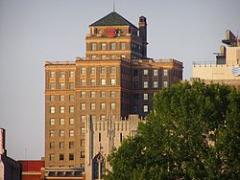
There are 21 high-rise buildings located in Charleston. The Kanawha Valley Building is the tallest structure in the downtown area.
Yeager Airport is West Virginia's largest airport. It is located 2-mile (3 km) north of Interstate 64 and Interstate 77, accessible via WV 114.
Amtrak, the national passenger rail service, provides tri-weekly service to Charleston via the Cardinal routes. The Amtrak station is on the south side of the Kanawha River, at 350 MacCorkle Avenue near downtown.
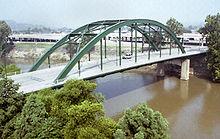
Interstate 64 crosses the Kanawha River four times as it passes through the Charleston metropolitan area. The Elk River flows into the Kanawha River in downtown Charleston.
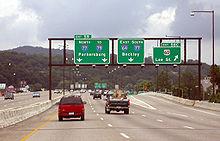
Charleston is served by Interstate 64, Interstate 77, and Interstate 79. The West Virginia Turnpike's northern terminus is at the southeastern end of the city. Two U.S. routes, US 60, and US 119, cut through the city center. US 21 and US 35 formerly ran through Charleston.
WV 25, WV 61, WV 62, and WV 114 are all state highways that are within Charleston's city limits.
Charleston is served by Kanawha Valley Regional Transportation Authority.
C&H Taxi services the Kanawha valley.
Charleston's sister city is:
Word Count: 5785






